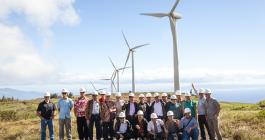Transmission infrastructure is critical for moving power
--
Transmission Planning and Analysis
Utilities use transmission modeling to evaluate the transmission grids to determine where additional transmission lines should be built or upgraded, how renewable energy can be effectively added to the transmission grid, and develop solutions to grid
--
System Control
--
Energy Interconnection
--





